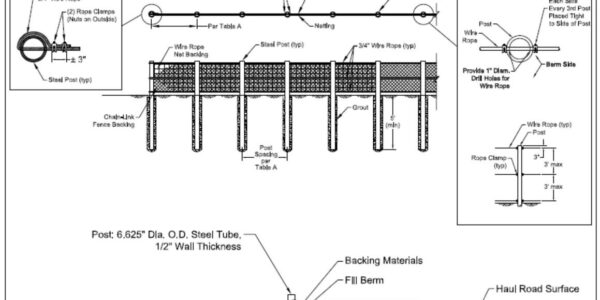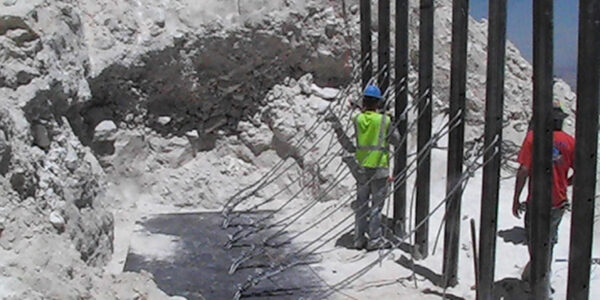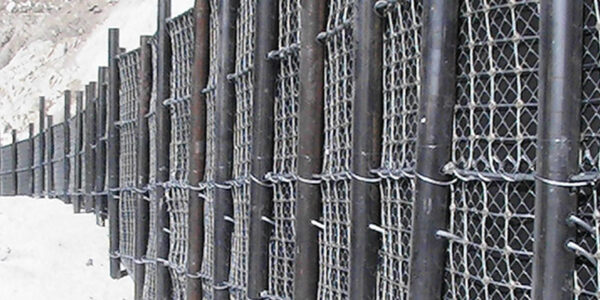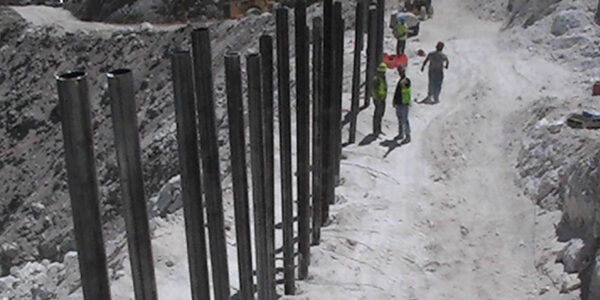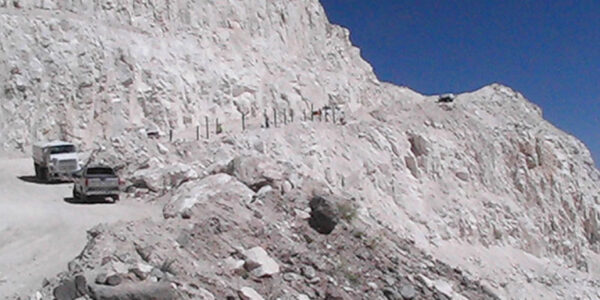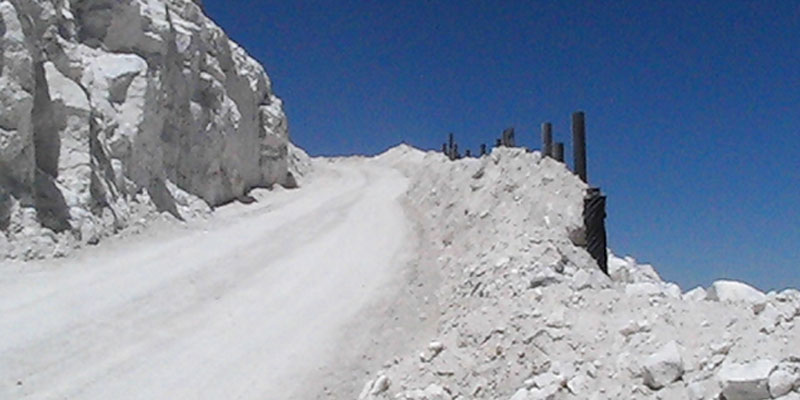
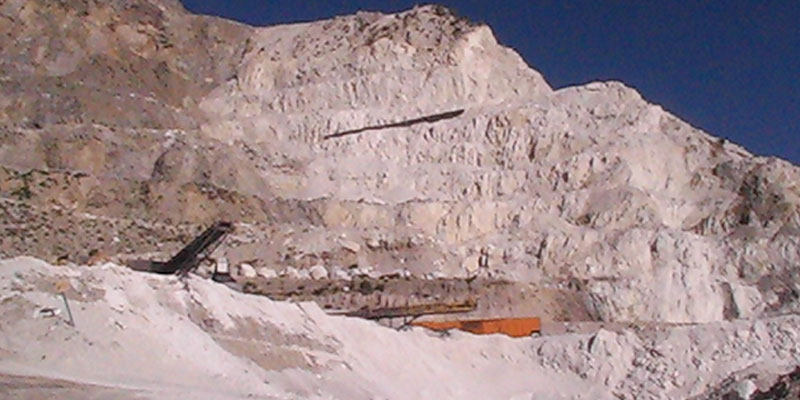
Project Description
Client: OMYA, Inc.
Location: Lucerne Valley, California
Project: OMYA Mine
Our firm was contacted by OMYA, Inc., to help them with mitigating a safety issue at one of their calcium carbonate surface mines in Lucerne Valley. To satisfy the safety requirements of their mining permit OMYA needed to provide minimum haul road widths for their 50-ton and 100-ton rock trucks that transported crushed materials from the mine to their processing facility. There was an area approximately 160 feet long at one of their haul roads where the width was not wide enough and the topography above and below the road was too steep to safely grade the road wider. We were asked to assess the area and come up with a means to widen the road from the existing 15 feet to the required minimum width of 20 feet and provide a required 4-foot-tall berm along the downhill side.
The Challenges
Working with HI-TECH Rockfall Construction Inc., a plan was developed to accomplish the road widening by constructing a retaining system along the downhill side of the road. The retaining system used 7-inch-diameter, 0.75-inch-thick, steel pipe posts, embedded in drilled holes at least 5 feet into solid rock, connected with 0.75-inch-thick wire rope. The space between posts were faced with wire rope net by Geobrugg that was covered with Tencate Mirafi filter fabric. To prevent overturning, each post was anchored in front with wire rope tie-back struts anchored in drilled holes. Posts and anchors were secured in the drilled holes using 6,000 psi non-shrink Rapid Set grout.
At the upper end where the retained height exceeded 15 feet, the post tie-back struts were anchored to an 8-foot by 20-foot, 1-inch-thick steel plate that was buried after connections were made.
The retained height ranged from 8.5 to 21 feet from competent rock to top of berm. HI-TECH Rockfall Construction Inc. completed the construction of the retaining system and grading of the road in front of it. We had an engineer on site every day to verify embedment depth of the posts and to monitor the various stages of construction. The result was a semi-temporary robust retention system that help up the widened portion of the haul road and the berm.
Challenges were faced daily during construction. The greatest challenges were safety issues, and after just a few hours on the side of the giant hillside one realized that there are many hazards and constant vigilance was required.
Falling rocks from the 240’ high rock face above the road was a constant hazard. To minimize rock falls, HI-TECH personnel rappelled from the top to bottom and removed loose rocks before any work started on the road. Still, rocks occasionally fell, and personnel were reminded to stay on the outside of the road whenever possible.
The hazard of working along the outside of the road was falling over the edge. The descent to the bottom of the steep hillside was about 130 feet. HI-TECH had a crew member dedicated to watching the others working along the edge.
The nature of the calcium carbonate rock and soil presented a few unique hazards. Being predominately white, the soil and rock faces reflected the sun quite well and fatigued the eyes and beat on exposed skin. This was an issue until about 2 PM when the sun moved behind the ascending rock face. Sunglasses, long-sleeved shirts, and sunblock helped. The crystalline nature of the rock and soil made it very sharp, which would cause abrasions to exposed skin in a fall, even from the dust from the almost constant wind. Wearing gloves and long-sleeved shirts helped to protect against this.
OMYA had their own safety protocols for vehicles traveling on the 5 plus miles of the haul road between their office facility and the work site. All vehicles were required to sign in at the office and check out a radio to broadcast their location at every mile marker. Rock trucks traversing the haul road would request vehicle to stop in turnouts at designated mile markers until the truck passed. Radios were turned in and vehicles signed out at the end of each day. At the work site, a blast of the horn would notify the crew that one of the massive trucks was about to drive though the area, and all work would stop until the truck had moved on.

